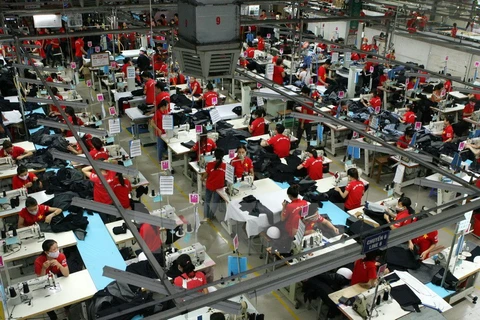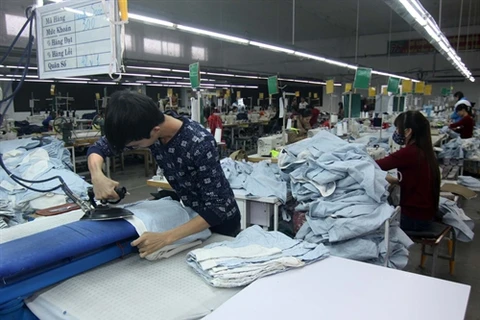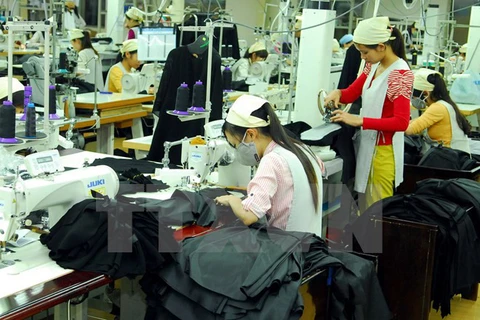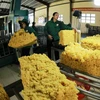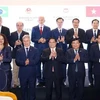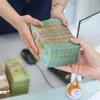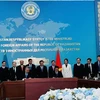Hanoi (VNA) – The textile and garment industry development planning to 2020 with a vision towards 2030 has set to earn an export value of 20 billion USD by 2020, which is seen as a setback when it already achieved the value of 27.5 billion USD in 2015 and expects 31 billion USD this year.
As the industry has sustained a stable export value growth of 15 percent in 2010-2015, the Vietnam Textile and Garment Association (Vitas) has suggested that the Government adjust the development planning for the industry, enabling it to obtain more success.
Deputy Minister of Industry and Trade Ho Thi Kim Thoa pointed to the current trend that the global textile and garment producers are moving to production areas with advantageous labour force and lower production costs.
The industry should make changes to its planning as it is enjoying fresh, lucrative development opportunities stemming from the country’s joining of bilateral and multilateral free trade agreements, she said.
Vitas Chairman Vu Duc Giang said the country is having an advantageous productive working-age population, which would greatly support the textile and garment industry’s expansion so the Government should devise a strategy towards making the industry keep up with the country’s integration pace.
To help its members optimise opportunities from free trade agreements, Vitas has suggested that the Government should fine-tune the textile and garment industry development strategy that was approved by the Prime Minister in decision No. 36/2008/QĐ-TTg dated March 30, 2008 and the Ministry of Industry and Trade in decision No. 3218/QĐ-BCT dated April 11, 2014.
It has proposed the Government to envisage a development strategy by 2040 so the textile and garment industry could advance to new goals that are meeting the nation’s speedy and extensive integration.
Vitas has asked the Government, the Ministry of Industry and Trade, and the Ministry of Planning and Investment to group textile and garment enterprises in concentrated industrial parks to easily handle the treatment of wastewater they discharge.
There are several textile and garment industrial zones in the northern provinces of Hung Yen, Thai Binh and Nam Dinh and the southern province of Dong Nai and Binh Duong, which cover over 100 ha each.
Vitas, therefore, suggested the Government allow the establishment of textile and garment industrial zones with 500-1,000 ha to reel in investments in dyeing, and fabric and yarn production, along with upgrading transportation infrastructure connecting the zones with logistics centres and ports to reduce transport costs.
Vietnam’s garment and textile exports in the first half of this year reached 12.6 billion USD, a year on year increase of 4.72 percent and accounting for 41 percent of the sector’s target for 2016.-VNA

